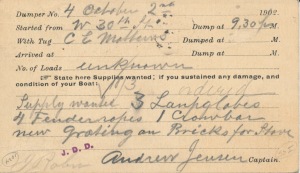 Philatelists have always referred to items they don't want or need, or which are in specialty areas that they don't respect as "garbage". But there is one rare philatelic item that has a trashy past and is called the "Garbage Card" or "full face McKinley". After President McKinley was assassinated in 1901, the Postal Service decided to honor him by issuing a current rate postal card with his portrait on it. Several designs were submitted and the approved design with a portrait of the President's portrait straight on (the so called "full face") was printed. When the President's widow saw the card, she objected to the likeness and the printing. In deference to her, the card was pulled and a 3/4 portrait card was issued. A box of 500 of the original cards was accidentally issued, probably because they had been ordered with preprinted addresses and had been removed from the main group of cards that were scheduled for destruction. These cards were imprinted with the return address of a garbage
Philatelists have always referred to items they don't want or need, or which are in specialty areas that they don't respect as "garbage". But there is one rare philatelic item that has a trashy past and is called the "Garbage Card" or "full face McKinley". After President McKinley was assassinated in 1901, the Postal Service decided to honor him by issuing a current rate postal card with his portrait on it. Several designs were submitted and the approved design with a portrait of the President's portrait straight on (the so called "full face") was printed. When the President's widow saw the card, she objected to the likeness and the printing. In deference to her, the card was pulled and a 3/4 portrait card was issued. A box of 500 of the original cards was accidentally issued, probably because they had been ordered with preprinted addresses and had been removed from the main group of cards that were scheduled for destruction. These cards were imprinted with the return address of a garbage
Monthly Archives: April 2019
- Read more »
- Posted April 11, 2019in NewsRead more »
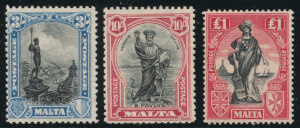 Collectors either esteem or denigrate the earlier stamps of British Commonwealth and they do so for the same reason. From about 1890 to the QE II period (1953), the stamps of nearly all the Commonwealth colonies are the same-small stamps with a portrait of the reigning monarch (either Victoria, Edward, George V or George VI)-distinguished by stamp collectors by scores of varieties by monarch, denomination and watermark. Many find it very redundant. Others exhilarate in the variety on a simple theme. Some like Mahler. Some like Bach. But several of the British Commonwealth colonies in the 1920s and 1930s experimented with change and collectors have rewarded these experiments with great collecting popularity. These countries (and Malta and Jamaica come to mind immediately) withdrew from the Crown Agents printing and design group and began to plan their own stamps with themes that were germane to the politics and history of the particular Colony. These stamps and countries are even more
Collectors either esteem or denigrate the earlier stamps of British Commonwealth and they do so for the same reason. From about 1890 to the QE II period (1953), the stamps of nearly all the Commonwealth colonies are the same-small stamps with a portrait of the reigning monarch (either Victoria, Edward, George V or George VI)-distinguished by stamp collectors by scores of varieties by monarch, denomination and watermark. Many find it very redundant. Others exhilarate in the variety on a simple theme. Some like Mahler. Some like Bach. But several of the British Commonwealth colonies in the 1920s and 1930s experimented with change and collectors have rewarded these experiments with great collecting popularity. These countries (and Malta and Jamaica come to mind immediately) withdrew from the Crown Agents printing and design group and began to plan their own stamps with themes that were germane to the politics and history of the particular Colony. These stamps and countries are even more - Read more »
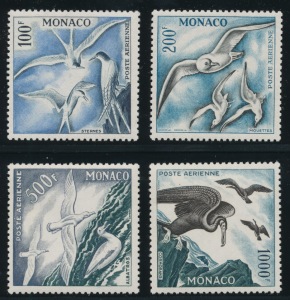 There are two main types of thematic collecting. The first involves using philatelic items to annotate a historical or cultural point. A collection entitled "The Slave Trade" or "Style and Syntax in Music" would be examples of this type. The second type is more prosaic-using stamps as pictures to illustrate a theme. The above set is the most expensive and popular of the Bird thematics and it is one of those sets that can easily be incorporated into either type of thematic collection. Its use as an example of the species of gull is its obvious use in a "Birds on Stamps" collection. But I have seen the set used in a Hitchcock thematic collection, and a Aviation collection as well. Thematic collecting is far more about imagination and far less about completion than traditional philately and this Monaco set is a good example of why.
There are two main types of thematic collecting. The first involves using philatelic items to annotate a historical or cultural point. A collection entitled "The Slave Trade" or "Style and Syntax in Music" would be examples of this type. The second type is more prosaic-using stamps as pictures to illustrate a theme. The above set is the most expensive and popular of the Bird thematics and it is one of those sets that can easily be incorporated into either type of thematic collection. Its use as an example of the species of gull is its obvious use in a "Birds on Stamps" collection. But I have seen the set used in a Hitchcock thematic collection, and a Aviation collection as well. Thematic collecting is far more about imagination and far less about completion than traditional philately and this Monaco set is a good example of why. - Posted April 08, 2019in NewsRead more »
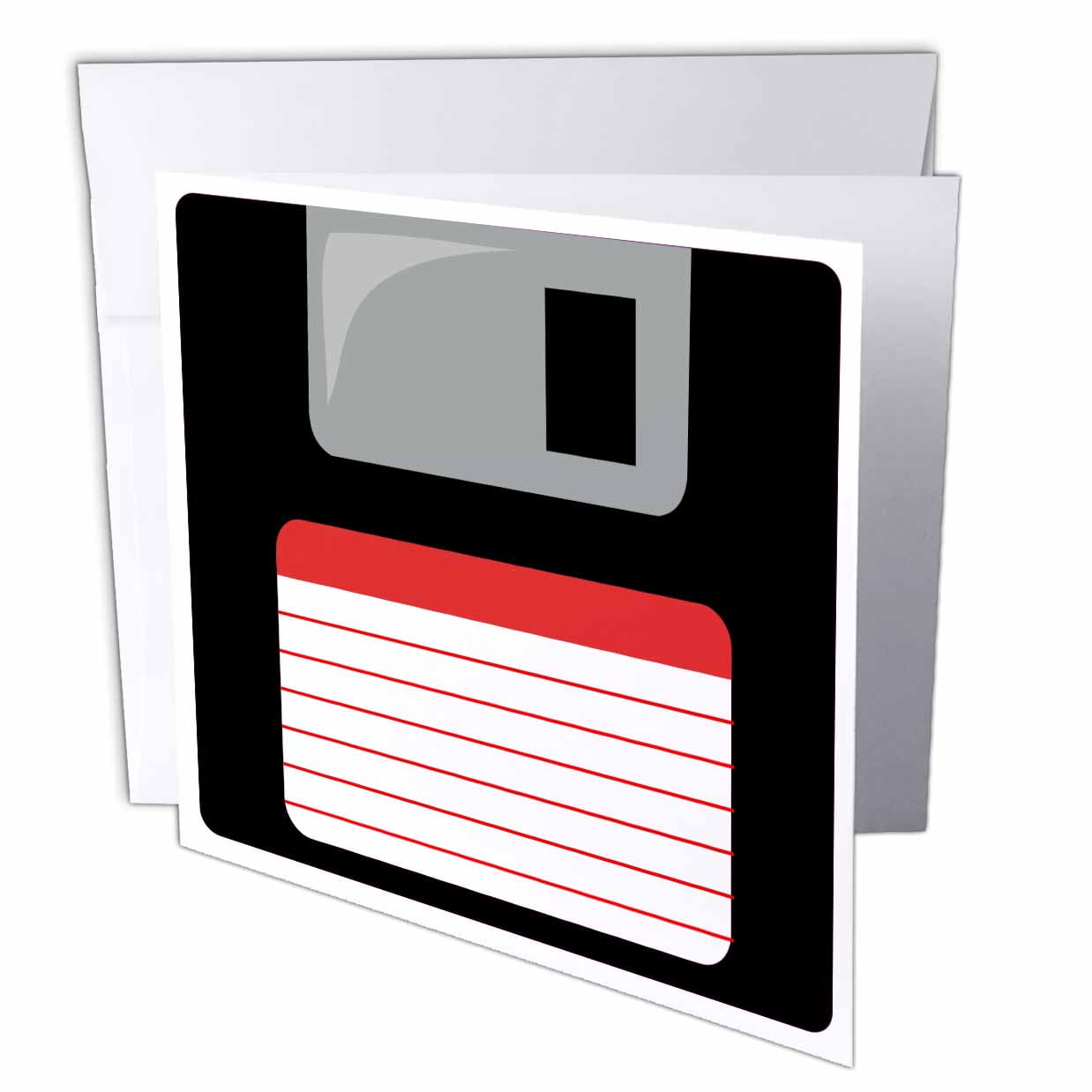 I am one of the least techno people around. I never learned how to use our VCR at home and when that technology was replaced I figured that I could wait out most innovations and never have to figure out how to use anything new. But several years ago I got an iPad and it was revelatory, so intuitive and easy and fast that I now carry mine around the house reading books, going online and responding to emails. All this is to say that if I can use the Scott catalog iPad app, which is really just the Scott catalog downloaded on your iPad, anyone can. This app is wonderful. The illustrations are great and movement between pages is fast. Imagine having the entire forty pound Scott catalog on your tiny Ipad to take to stamp shows or your friend's house or just to have with you with all of your books and Internet connections that your iPad gives you. It is just a matter of a few years before iPad type apps for the Scott catalog are the only way that the catalog is available. Many people criticiz
I am one of the least techno people around. I never learned how to use our VCR at home and when that technology was replaced I figured that I could wait out most innovations and never have to figure out how to use anything new. But several years ago I got an iPad and it was revelatory, so intuitive and easy and fast that I now carry mine around the house reading books, going online and responding to emails. All this is to say that if I can use the Scott catalog iPad app, which is really just the Scott catalog downloaded on your iPad, anyone can. This app is wonderful. The illustrations are great and movement between pages is fast. Imagine having the entire forty pound Scott catalog on your tiny Ipad to take to stamp shows or your friend's house or just to have with you with all of your books and Internet connections that your iPad gives you. It is just a matter of a few years before iPad type apps for the Scott catalog are the only way that the catalog is available. Many people criticiz - Posted April 05, 2019in NewsRead more »
 One of the most interesting aspects of US philately over the last twenty years has been the number of unusual collecting varieties that are issued as part of the ordinary postal issues of the Bureau of Engraving and Printing. Modern technology seems to produce more printing varieties rather than fewer and in the future many of these varieties could turn out to be very rare. Compare two regular issue first class postage rate stamps- the 37c regular issue stamp of 2002 to the 6c regular issue stamp of 1970. There are over 100 listed varieties of the 2002 issue in the Scott specialized compared to only about 20 of the 6c stamp. And specialists identify many more varieties than these. What traditionally happens in philately is that at the onset only a few collectors search out newer varieties. Look at early plate blocks. Plate Block collectors in the 1920's were looked at as kind of nutty but over the years their prescience paid off. It is impossible to predict that the thousands of varieties
One of the most interesting aspects of US philately over the last twenty years has been the number of unusual collecting varieties that are issued as part of the ordinary postal issues of the Bureau of Engraving and Printing. Modern technology seems to produce more printing varieties rather than fewer and in the future many of these varieties could turn out to be very rare. Compare two regular issue first class postage rate stamps- the 37c regular issue stamp of 2002 to the 6c regular issue stamp of 1970. There are over 100 listed varieties of the 2002 issue in the Scott specialized compared to only about 20 of the 6c stamp. And specialists identify many more varieties than these. What traditionally happens in philately is that at the onset only a few collectors search out newer varieties. Look at early plate blocks. Plate Block collectors in the 1920's were looked at as kind of nutty but over the years their prescience paid off. It is impossible to predict that the thousands of varieties - Posted April 04, 2019in NewsRead more »
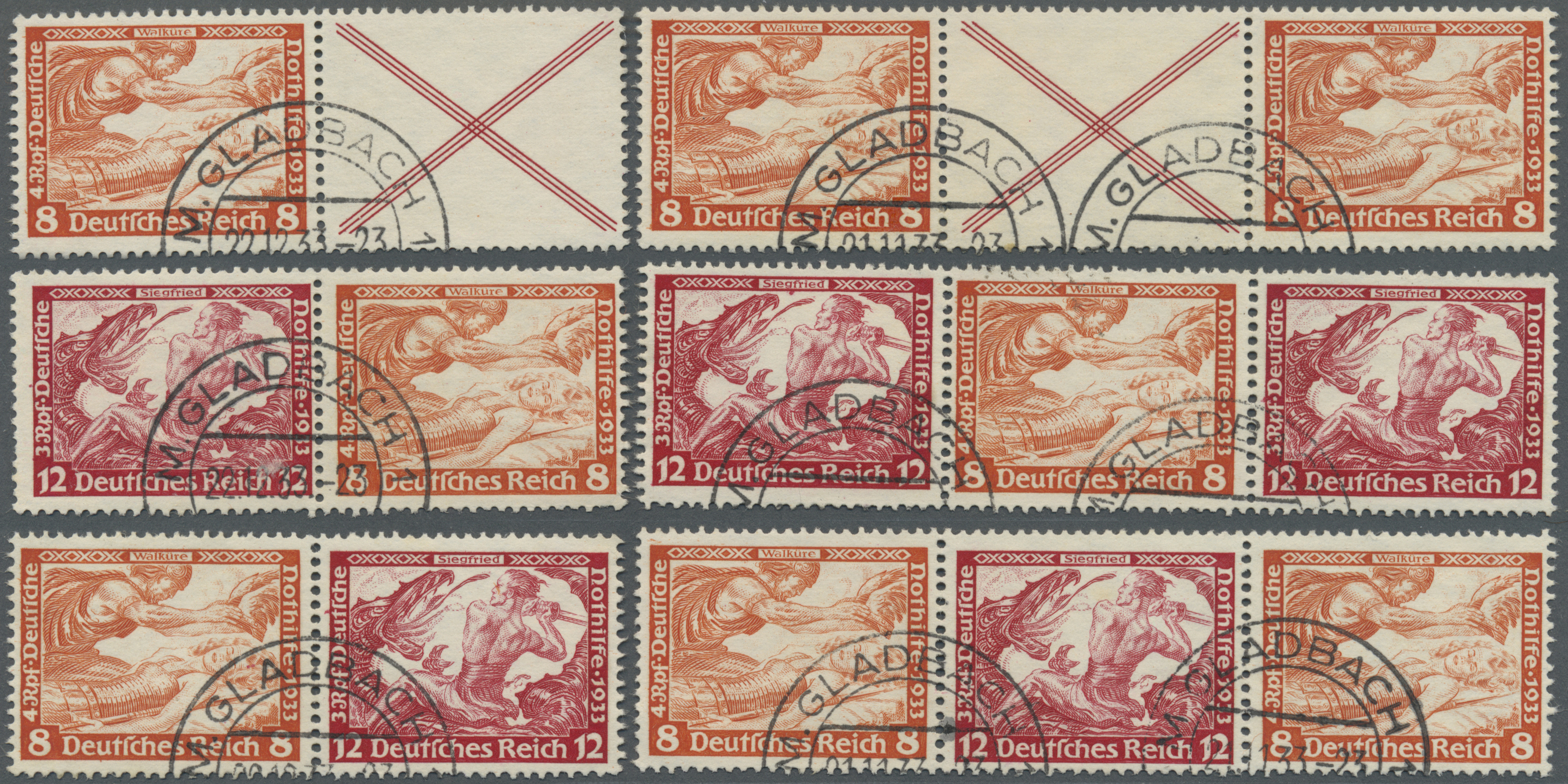 There are areas of specialization that are unique to each country or areas of philately. United States collectors are avid about plate blocks and stamp collectors in the rest of the world think we are crazy. Israel collectors esteem tabs. British Commonwealth collectors collect gutter pairs and marginal markings. German area collectors collect Zusammendrucke. Stamps that go into stamp booklets are printed in panes (usually of six) and those panes are printed in sheets of various sizes. The United States post office does not issue these large uncut sheets to collectors so that all US philatelists can collect is booklet panes and booklets. German philatelists have additional options as the German post office sells full booklet sheets to philatelists. These are uncut sheets, often with 100-220 subjects on the sheet. German collectors collect them in full sheets, as panes and in combinations that never would be issued to the public but which are possible from breaking up the sheets. Zusammendrucke
There are areas of specialization that are unique to each country or areas of philately. United States collectors are avid about plate blocks and stamp collectors in the rest of the world think we are crazy. Israel collectors esteem tabs. British Commonwealth collectors collect gutter pairs and marginal markings. German area collectors collect Zusammendrucke. Stamps that go into stamp booklets are printed in panes (usually of six) and those panes are printed in sheets of various sizes. The United States post office does not issue these large uncut sheets to collectors so that all US philatelists can collect is booklet panes and booklets. German philatelists have additional options as the German post office sells full booklet sheets to philatelists. These are uncut sheets, often with 100-220 subjects on the sheet. German collectors collect them in full sheets, as panes and in combinations that never would be issued to the public but which are possible from breaking up the sheets. Zusammendrucke
